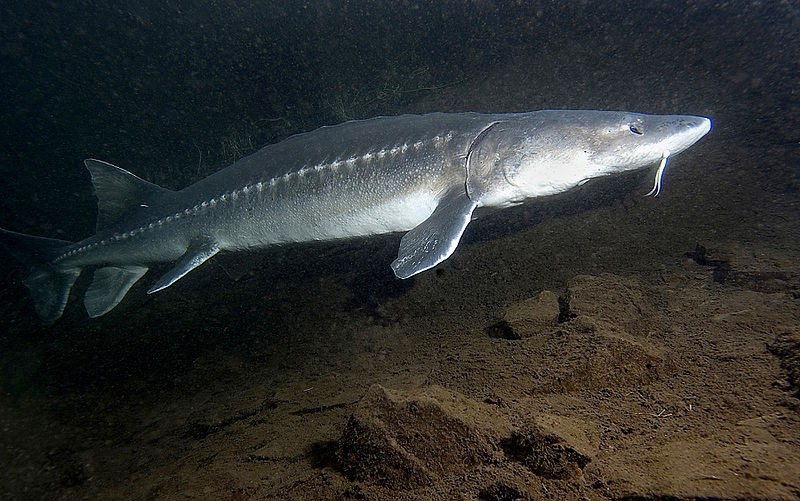Canadian researchers are alarmed by the sudden death of an endangered sturgeon. In the early days of September, Nikolaus Gantner and two colleagues hurried out in a jet boat against strong currents to investigate the first spindly, armor-clad cadaver discovered in the swift-moving Nechako River.

Days later, 10 more corpses were discovered floating down a river in western Canada that was 100 kilometers long.
Mass Die-Off
The inexplicable deaths of 11 threatened white sturgeon in a short period of time blindsided researchers attempting to conserve a species on the verge of extinction.
The species, toothless apex hunters that glide smoothly in a few rivers in British Columbia, hasn't evolved much in 200 million years. Sturgeon use their whisker-like barbels that dangle from their snout to softly brush the gravelly floor as they move through the murky waters.
A white sturgeon's body is covered in five unique bony plates called scutes, giving it the appearance of an ancient fish. One was said to be 104 years old and weighed close to 1,800 pounds, while the biggest ever reported was 20 feet long.
Extremely Unfortunate
Senior fisheries biologist Gantner from the government of British Columbia stated, "When a giant head appears through the murky water and the eyes glance at you, it's just fantastic to see this beautiful animal living." Knowing that most of the fish we encounter are older than us makes you appreciate it.
Gantner and his coworkers have experienced an unanticipated emotional toll due to the sudden sequence of deaths.
"I'm really sad. I feel like I've been going through mourning these past few weeks," he added. He feels sadness each time he and his colleagues delicately transfer the massive fish carcasses from the shore to the freezer and then onto the necropsy bench. "I don't believe I experienced it with any fish I've dealt with," the speaker said.
There are currently no clear solutions. The investigation team has not discovered any signs of trauma, chemical exposure, sickness, or mortality brought on by angling.
Whatever it is, bigger sturgeon are the only species that are impacted. It is confined to a certain location in time and space. That thus provides us with some hints, according to Steve McAdam, a scientist from the province's ministry of land, water, and resource management. In some ways, it's simpler to rule out many possibilities than in others.
For McAdam, who investigated a similar die-off in the lower Fraser River in 1993 and 1994, when the area lost 36 fish in two years, the fatalities in the Nechako are especially devastating.
According to McAdam, a series of tests conducted after that die-off was inconclusive; the occurrences occurred in different ecosystems hundreds of kilometers apart and provided investigators with few leads.
All Eyes are Focused
The team looking into the present incident has made a public request for assistance since they only have a little window of time to recover the dead sturgeons before decomposition sets in and obliterates important information. Residents in a location where the fish have strong cultural links to First Nations and are taught in nearby schools have closely watched the event.
Related Article : Dead Giant Leatherback Turtle May Have Been Killed by Pollution
For the latest similar news, don't forget to follow Nature World News!
© 2025 NatureWorldNews.com All rights reserved. Do not reproduce without permission.





